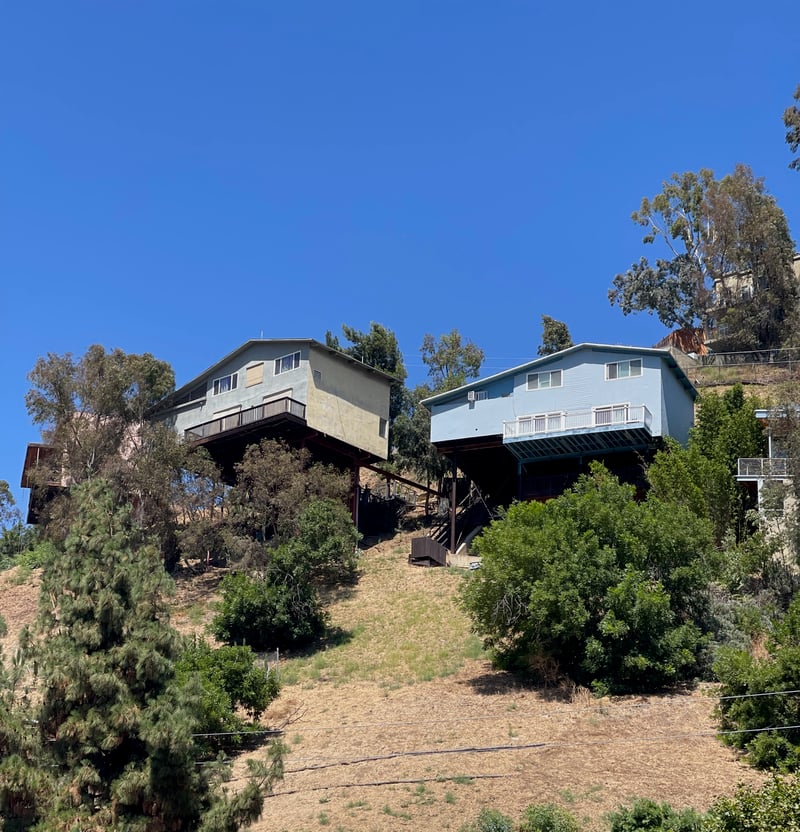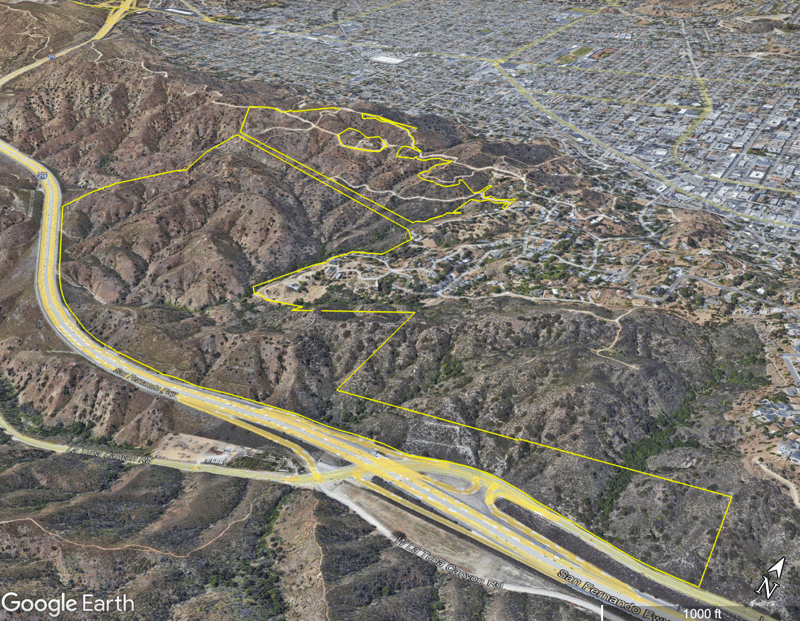|
|
|
|
|
|
|
Dear DNA friends,
I hope all is well with you as the work and school year kicks in.
With Labor Day weekend coming up, you may have friends in town who want to see cool houses in LA. Well, your life as a tourist guide will be easier if you go straight to these self-driving Trails of fascinating homes created by contributors to Friends of Residential Treasures: Los Angeles (FORT: LA).
FORT, founded by the filmmaker Russell Brown, offers trails, along with research and public events, aimed at inspiring Angelenos (and their visitors) to "venture outside their regular urban LA village" and take in new buildings, neighborhoods, and nook and crannies of the city. He adds, "The Trails bring you closer to histories of owners and architects, so it’s a kind of communing with the DNA of Los Angeles."
And it does, as I learned this past weekend when some newcomers to the Southland asked me for advice on what to go and see. I sent them the link to the Trails, and off they went happily, choosing from routes that could take them past residential treasures such as swank Trousdale estates, postwar homes by Japanese-American architects, houses commissioned by civil rights leaders, the ever popular Witch Houses 1, 2 and 3, and Stilts on Screen, as in houses on stilts that were made iconic in films and TV shows like Heat, Bosch, and Lethal Weapon 2 (starring the Garcia House, designed by John Lautner, above.)
I myself got to get up close to the latter, for this recent Greater LA episode, when Russell and I accompanied Steve Chiotakis on a tour of some of the most remarkable of the stilt houses. We also visited with some homeowners who told us why they chose to live in structures held up by skeletal columns that cantilever over precipitous drops. It turns out the reason is mostly environmental, as both women said they appreciate living over the untamed wild Los Angeles mountainscape with its bobcats and coyotes and birds and native shrubs and trees. They didn’t want to live on graded hillsides in homes protected by fortified walls, blocking the passage of flora and fauna. They liked the iconic architecture too.
 Stilt Houses leave the land untouched. Photo by Frances Anderton Stilt Houses leave the land untouched. Photo by Frances Anderton
No Canyon Hills
With the ideal of no grading of land in mind, I have been following with great interest the battle being fought to save 300+ acres in the Verdugo Mountains in Tujunga (covered on Greater LA). The land is threatened by a proposed development called Canyon Hills that was entitled almost 20 years ago for a luxury, gated housing tract.
Fast forward 18 years and the developer wants to begin grading the land, but now times have changed. In 2023 we have a far greater sense of the need to protect passageways for mountain lions and other creatures, as well as heightened awareness of the fire risks and other perils of building in the Wildland Urban Interface (WUI). So a coalition of activists, nearby residents, tribal elders, citizen scientists and land-use lawyers is fighting for a reconsideration of the entire development.
The campaign was launched by artist-environmentalists Emma Kemp and Mateo Altman, along with a core team of community researchers, “in solidarity with the plant and animal communities of the Verdugo Mountains in Los Angeles, ancestral land and unceded territory of the Fernandeño Tataviam Band of Mission Indians, and the Gabrieleno (Tongva) Band of Mission Indians.”
Attitudes about land-use have shifted so much that at a recent meet and greet for Assemblywoman Laura Friedman, she expressed support for more housing in Los Angeles, but not through building over remaining green open space such as Canyon Hills. Rather, she said it should be in hubs where transportation, jobs and social infrastructure already exist. That's according to attendee Christian Kasperkovitz, who is helping raise awareness with these neat illustrations.
Now the coalition, armed with a petition signed by almost 175,000 people, is working with conservation partners, including two tribal land conservancies, to negotiate a solution, with the hope that the site may be conserved.
 Aerial shot of the Canyon Hills site, showing the development area; courtesy No Canyon Hills Aerial shot of the Canyon Hills site, showing the development area; courtesy No Canyon Hills
Springs in the Air!
In the meantime, I am happy to share the news that another natural resource has, for now, been saved from the wrecking ball.
Longtime bathers in the natural waters at Beverly Hot Springs in Koreatown were shocked to learn, mostly by word of mouth, that developers planned to demolish the spa, cap the well, and build several stories of housing and ground-level retail with underground parking. It was a mystery as to why such a development would not incorporate the springs as a highly desirable amenity.
A campaign was mounted, an appeal was filed, and this report was aired on Greater LA. Then, last week we learned that the developers have pulled out of the project altogether.
The next step is figuring out how to sustain these baths in perpetuity, for people of all income levels, which may start with trying to get the spa designated as a historic landmark.
To learn more about ongoing efforts as well as the fascinating history of BHS, read this deeply researched piece by Tracy Abbott Cook. She unpacks the spa's connection to the onetime nearby Bimini Baths and the segregation fight that killed them. She waxes lyrical on the waters today, "where there is zero racial tension" and "a healing response to the kevlar wrapped psyche that plague most Angelenos living our big city life." And she explores the mysterious sulfur smell that wafts around the baths shortly before earthquakes!
|
|
|
|
|
|
|
|
|
|
|
|
|
|
|
|
|
|
|
|
|
|
|
|
|
|
|
|